Kitchen benches: types, design options and selection features

The arrangement of the kitchen must be approached thoroughly. Furniture for it should be not only durable, but also aesthetically attractive. Today, one of the key elements of furnishing this space is the bench. In this article, we will consider what it can be in terms of construction and design, and also note the main nuances of its choice when buying.
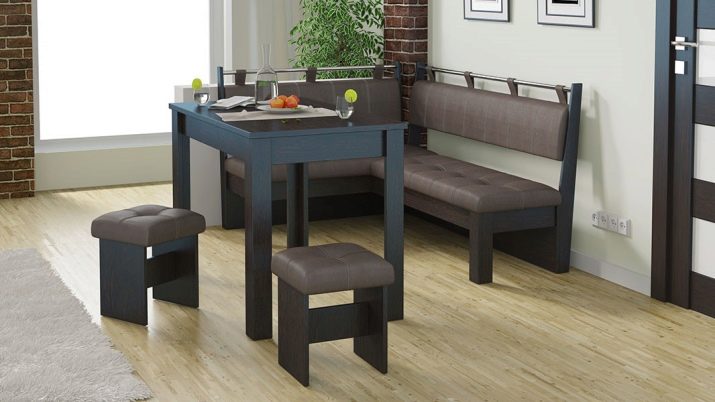
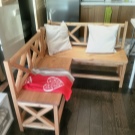
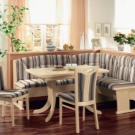

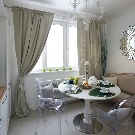
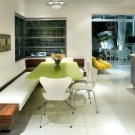
Peculiarities
The kitchen bench is a bench for a corner or dining table. In fact, it can be called a kind of alternative to stools and chairs that are used to equip kitchens... Depending on the size of the room and the available furniture, it may differ in size, shape, material of manufacture and degree of practicality.
With the right approach to the choice, this product will contribute to the rational use of the usable area of the kitchen space.



The task of such a shop is to place household members at the table with maximum comfort in a confined space. Based on the variety, the model can be designed to complete the island arrangement of the kitchen, in which each functional corner is designed taking into account zoning techniques. In this case, the bench complements the dining area, which consists of a table and chairs. Depending on the location of the corner, the bench can replace chairs.
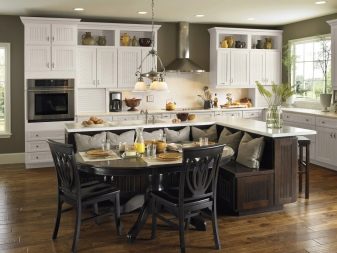
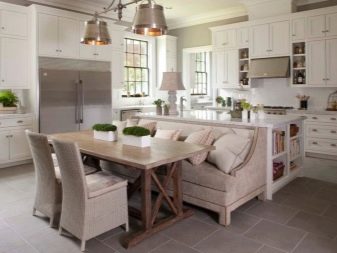
It significantly saves usable space and can be designed for a different number of people. This is an improved piece of furniture that has great functionality, since it can be not only a means of placing households and guests at the dining table.
In addition, modern benches, depending on their design and purpose, can be a recreation area. Moreover, they can be used as narrow sofas.
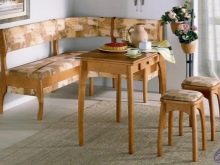
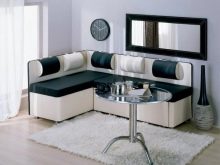
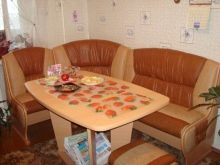
Advantages and disadvantages
Kitchen benches have many advantages. For example, today these products:
- differ in the widest range of stylistics, so they can be selected for a specific kitchen design;
- differ in size, which allows you to choose an option taking into account the available usable area of a particular room;
- do not take up much space, unlike bulk chairs with reclining backs;
- in most cases, they are characterized by comfortable seating, often with soft upholstery;
- when equipped with spacious drawers, they can be used for additional purposes (storage of dishes, things, packages);
- in the presence of backs, they protect the wall from premature pollution;
- differ in a wide range of colors, and therefore it is easy to choose them to match the existing furniture or kitchen accessories;
- are made of high quality materials using modern technologies;
- can be additionally equipped with soft mats to increase the seating comfort;
- due to the variety of shapes and varieties, they can be selected not only for typical kitchens, but also for bay window ledges;
- are made by conveyor method in production or privately to order for specific sizes of kitchen furniture;
- in most cases, they leave more room to move around the kitchen in comparison with chairs;
- mobile and can be moved to any part of the kitchen at the request of the homeowners;
- differ in the variability of the price range, which allows everyone to choose an option, taking into account the possibilities of the budget.
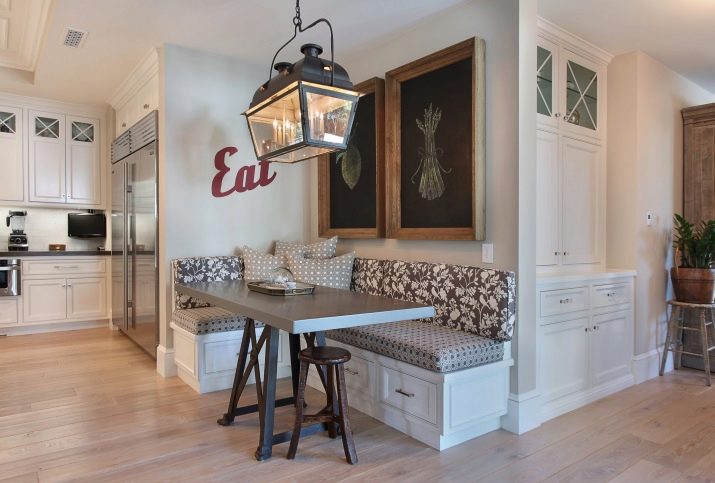

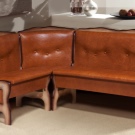
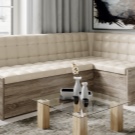
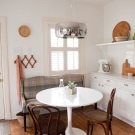
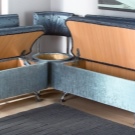
As for the shortcomings, there are not so many of them in the kitchen benches. They do not allow the user to stand up without disturbing those seated next to them if the bench is designed for three people. In addition, not all models are convenient for a specific type of kitchen layout. If this is a corner option, it is also difficult to get up from such a bench without disturbing the person sitting next to it.
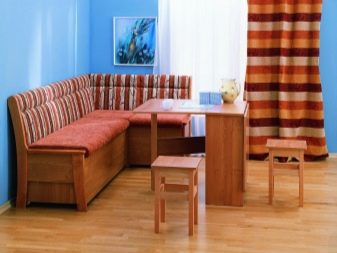
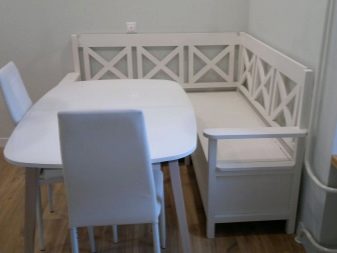
It is worth noting and less convenience when cleaning... If it is easier to move the stools and chairs when cleaning the floor, then the legs of the bench will have to be washed without moving the furniture itself. Difficulties can arise when buying even if the layout provides for the installation of a kitchen bench exclusively in one, not the most convenient place. In this case, it is important to place the shop in the right place so that it does not interfere with households when moving.
The disadvantage of certain models of kitchen benches is the inconvenience of caring for their upholstery. Expensive furniture is beautiful, its upholstery is soft and comfortable, but it needs frequent cleaning, and this leads to its rapid wear.
In addition, not all upholstery types can be cleaned with detergents. Some of them absorb not only dirt, but also unpleasant odors.
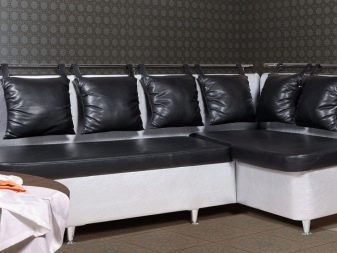

Views
Despite the fact that kitchen benches differ in different degrees of user comfort, it is not difficult to find a good option if desired. However, for this you need to have an idea of the types of products. By type of design, kitchen benches can be linear and angular. Products of the first type are traditional shops that can be without or with backs.
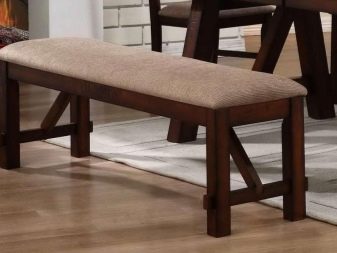
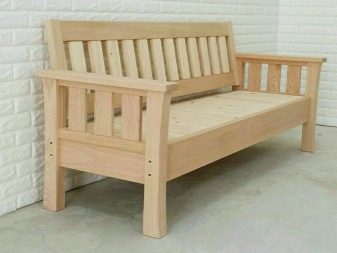
The second modifications are benches with right angles. They can consist of separate modules, standing side by side, or be a single whole. In such models, the side element is fastened between the bench backs. Depending on the design and type of construction the side element can be a small connecting part or a full-fledged triangular module with a smooth bend in the back.
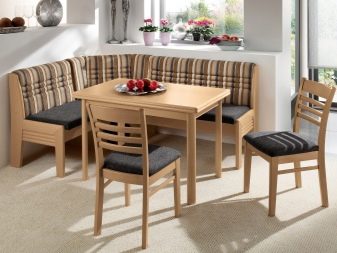
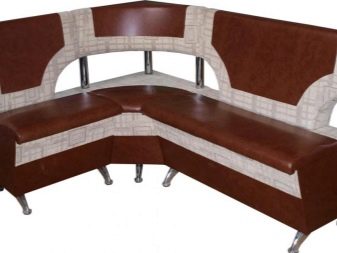
Products of the second type often resemble compact sofas with a berth in appearance. In fact, these are sofa benches or miniature sofas with straight backs, which are conveniently located against the wall.
Both lines of kitchen benches can have spacious drawers for storing household items, which is important for small kitchens and allows you to remove a lot of little things that create a sense of clutter in a cramped room.
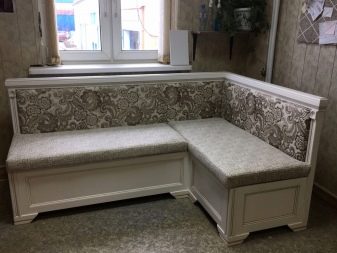
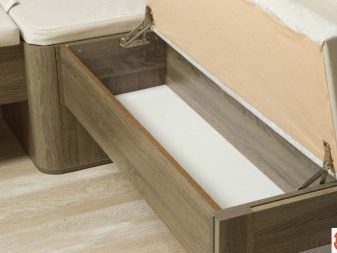
By design features, the models of kitchen benches may differ in the presence or absence of legs. Moreover, their number can vary from four for straight (linear) models to 6-11 for analogs of the angular type. The legs of the products can be straight and curved. The products themselves are semicircular and segmental, the seats are straight or with notches.
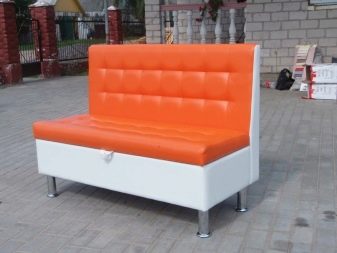
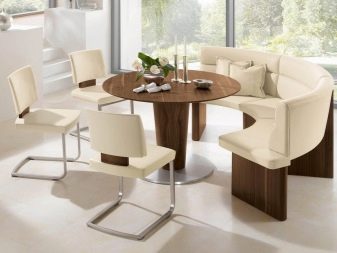
The mechanism for transforming storage systems at kitchen benches can be folding and retractable. At the same time, the number of internal drawers may be different, depending on the type of product. The backs of the kitchen benches are also very diverse. In their simplest form, these are options with a fairly rough top. Products of a more pompous look are equipped with hanging pillows.
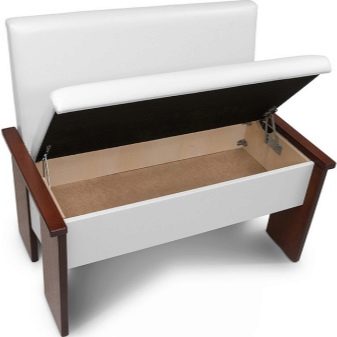
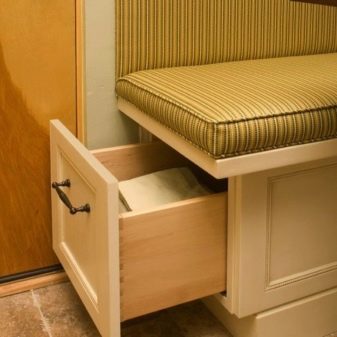
Rarely on sale you can find products of the U-shaped type. Such benches are often made to order, equipping with their help a bay window or gazebos. Such benches may have several boxes, depending on the degree of complexity of the structure itself. Another rarity are models equipped not with boxes, but with shelves in which baskets and boxes with the necessary household items can be placed.
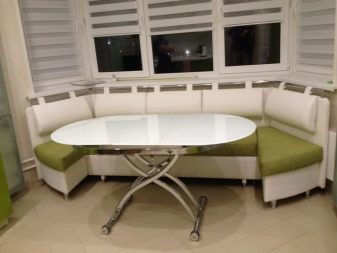

The difference between some straight models is the transformation mechanism that turns the bench into a compact bed. This is good when you need to accommodate a friend or a late guest for the night. However, as practice shows, it is difficult to constantly move such shops.
Uncomfortable in the kitchen and asymmetrical models, having a figured headboard on one side and providing for the transformation of the bench into a narrow berth.
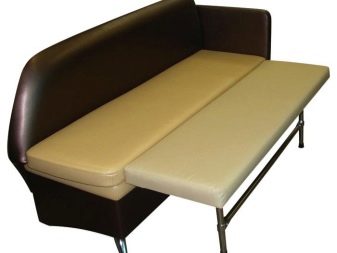

Materials (edit)
Different raw materials are used in the production of kitchen benches. At the same time, the greatest demand for both manufacturers and buyers is wood different breeds and metal... Budget models are made from Particleboard and MDF, as well as plastic. Wooden furniture fits perfectly into the interior of the kitchen, it is practical and durable.
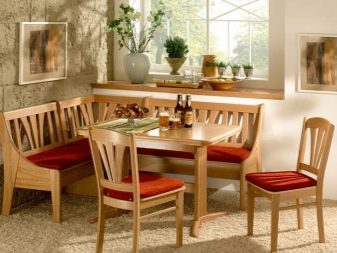
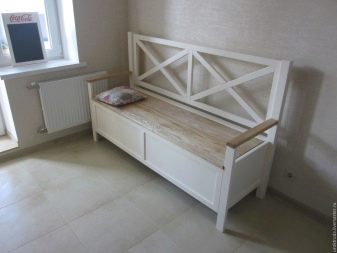
Chrome plated steel is often used for legs and design elements. Often it refines the structure itself, giving it completeness. Metal fits perfectly into modern design trends, such benches are suitable for high-tech, brutalism and modern styles. Wood is used in almost any interior style.
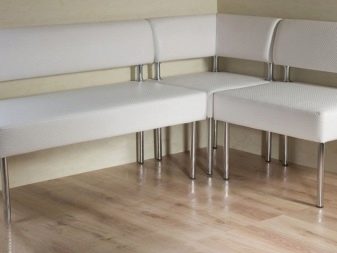
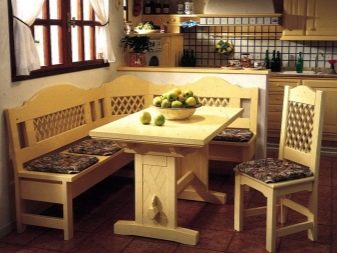
The upholstery material for kitchen benches can be synthetic textiles, artificial and natural leather, leatherette... Materials such as faux suede, microfiber, flock, tapestry and jacquard have also proven themselves well. Foam rubber is used as the basis for soft bedding in production.
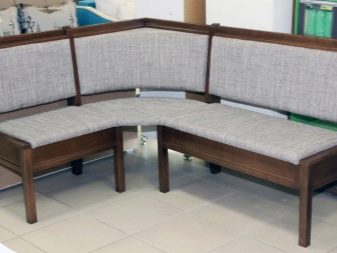
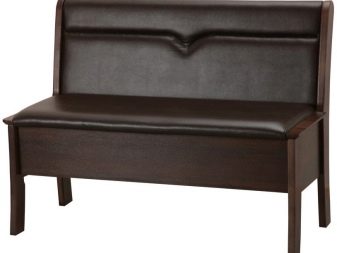
Design
The design solution of the kitchen bench is subject to the specific style of the interior in which the kitchen is sustained. Of course, the basis for the design is often set precisely by the bedding and soft backs, as well as hanging pillows that are attached to a metal bar. In this case, the pillows can be attached to the hinges. In addition, they can be independent elements of models: they can be stored unnecessarily inside spacious boxes.
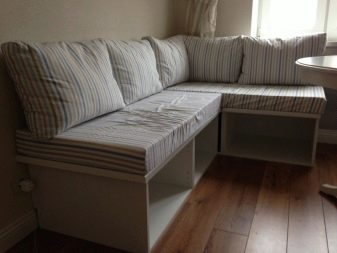
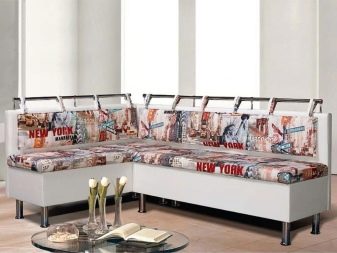
In some cases, the cushions are like dense modules, through which the design of the bench can be varied. Sometimes it is a single back cushion with height adjustment. In some cases, the design of the bench resembles a quilted mattress, folded from the base to the top of the backrests. By the type of design, the backs and seats may not be related to each other.
Besides, often, the design solution provides for a model in which the seats can be reclined separately under each seat... And also the back can be carved, curly, reminiscent of the head of the bed. It can be decorated with a quilted pattern, textile upholstery print.Other models allow the use of a mattress and cushions. The chest bench also looks interesting in the interior.

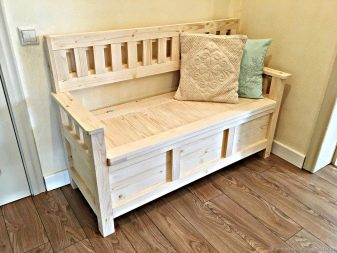
As for the color solutions, they are approached from the point of view of practicality. White shop it looks beautiful, but this option is not suitable for a room with an increased likelihood of contamination. It is very easily soiled, moreover, the white color turns yellow over time, which makes the shop untidy. Among the popular tones that buyers are looking for, it is worth highlighting blue, beige, woody, chocolate.
In addition, the following tones are popular: gray-blue, light wenge, purple metallic, milk, pistachio. Adherents of bright colors are looking for kitchen benches in stores, made in contrasts of wine with gray, orange with metallic, indigo with brown and beige. Looks beautiful in the interior of the kitchens of the benches in duets terracotta and mocha, green with white, black with silver and white, brick with gray.
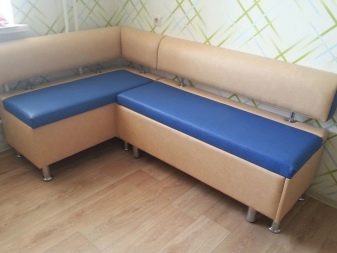
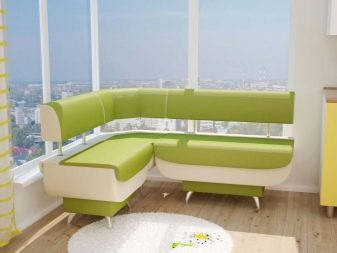
How to choose?
Key rules when buying a kitchen bench there must be factors such as:
- product resistance to abrasion;
- reliability of the structure frame;
- low degree of ignition;
- environmental friendliness of the material used in production;
- resistance to absorption of foreign odors;
- the possibility of using detergents for cleaning.
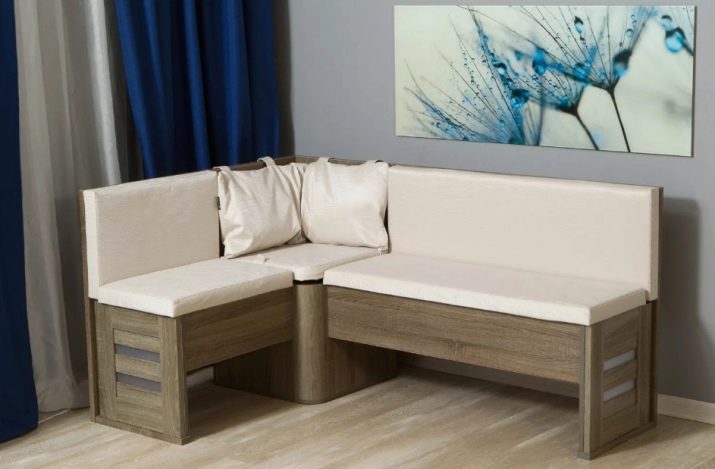
If a store has a product that you can pick up or order removable covers, it is worth considering as a purchase. For a small kitchenette, you can buy a regular backless benchif the interior of the room strives for simplicity and rural life. For example, this is a great option for styles such as country and shabby chic.
Straight bench with upholstery and backrest for more comfort in everyday life. If there is not enough space in the room, the option with armrests is not suitable, but when there is enough, you can consider the option of purchasing a sofa bench. It can be a narrow model with a retractable or folding transformation system.
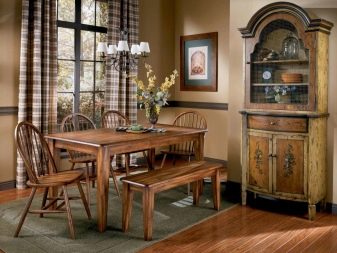
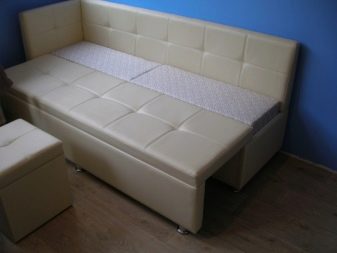
Corner benches look presentable and are often a decoration of the kitchen interior. Often their modules allow you to transform a corner from the left type to the right one. However, if the buyer needs a specific model, and the modules cannot be supplied properly, this option is not suitable for arranging the kitchen.
To save space in the kitchen, saving it from unnecessary items, you need to take options with spacious drawers. In this case, the models can be semicircular or resembling sofas.
Ideal if the product has a function for adjusting the legs in height. It is even better if the upholstery of the model is made of leather or leatherette.
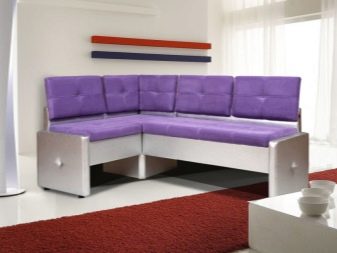
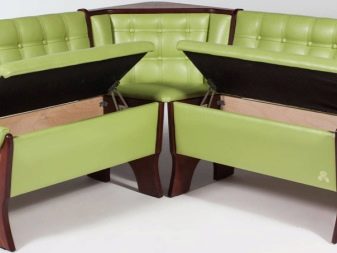
For a tiny kitchen, you can purchase a mini bench. If the table in the room is round, you can choose a corner rounded model of the kitchen bench for it, complementing it with chairs in the same design. Moreover, if the table has a glass top, it will be matched with a silvery soft upholstery to match the texture of the metal. If the bench has a right angle, it will fit a small rectangular table.
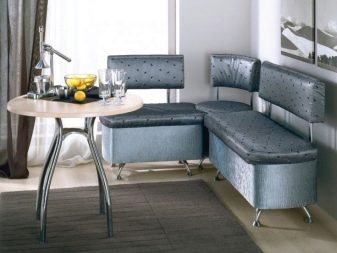

Looking closely at a particular model, it is necessary to rely on the area of the kitchen and the degree of elongation of the room. If it is narrow, it is better to choose the corner option, since a linear bench will lengthen an already narrow room. Between aesthetics and practicality, you need to find a middle ground. Ideally, the model will not be bulky, but at the same time it will be equipped with at least a small inner drawer.
For products with soft padding, the filling should be dense, restoring its shape after sitting. Between regular foam rubber and polyurethane, you need to choose the second option.
It is great if the model allows the removal of bedding for cleaning. The upholstery material should be practical.

For information on how to make a bench in the kitchen, see the next video.








